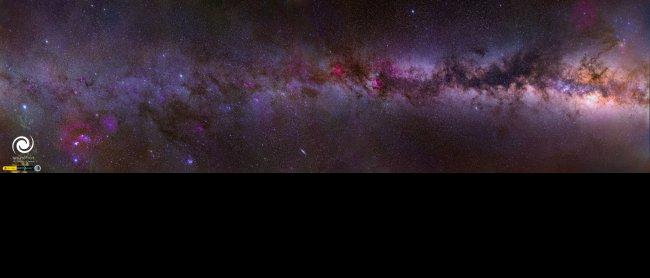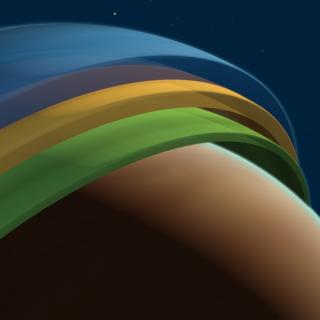A digital reflex camera, a telephoto lens, and a night sky renowned worldwide for its quality and darkness. These are the ingredients of GALÁCTICA, an IAC project whose aim is to obtain a gigapan (a giant mosaic) of the Milky Way to be used for outreach. What makes it different from other similar maps of our galaxy is that this is the first time such a map has been produced without relying on the telescopes of large professional observatories.
'Because of the exceptional atmospheric conditions of Teide Observatory, we were able to acquire high quality images,' notes Doctor Miquel Serra Ricart, the project's coordinator, as well as being Manager of the Teide Observatory and an IAC researcher. 'We're still analysing the final mosaic in search of small objects that we haven't yet labelled,' he adds.
For a year, with a digital camera equipped with a telephoto lens, the team obtained the images that make up the final gigapan. The team has also published 50 images at high resolution of the main objects that form part of our galaxy's fauna. Serra and his team are, 'Very enthusiastic about the second part of the project, which take us to the dark skies of Namibia from where we shall complete GALÁCTICA.'
Instrumentation and observing procedure
A DSLR full-frame camera (a modified SONY A7S) equipped with a fast telephoto lens (Canon 200 mm f/1.8)was used to build up the panorama. A second camera, a modified SONY A7S (with a 400 mm f/2.8 telephoto lens) was used at the same time to make high resolution observations of 50 objects that form part of the galactic fauna catalogue.
The two cameras mounted in tracking mode on the Open Outreach Telescope (Telescopio Abierto Divulgación, TAD). This robotic telescope is equipped with a Losmany Titan equatorial mount to compensate for motion caused by the Earth's rotation and is located at Teide Observatory (Izaña, Tenerife).
A total of seven months was dedicated to the work, and observations were made only on nights close to new moon. This required 50 nights' observing, in which 186 hours were needed to produce the panoramic view and 50 hours for galactic fauna objects. The images acquired so far cover 70% of the Milky Way, from the molecular cloud complex of Orion to Antares in the constellation Scorpius. During the second half of 2018, the GALACTICA-S project, funded by FECYT, will map the remaining 30% of our galaxy.
The GALÁCTICA project has been funded by the Fundación Española para la Ciencia y la Tecnología (FECYT) of Spain's Ministry of Economy, Industry and Competitiveness.
The IAC Observatories form part of Spain's network of Special Scientific and Technical Infrastructures (Infraestructuras Científicas y Técnicas Singulares, ICTS).
More information:
-GIGAPAN GALÁCTICA http://gigapan.com/gigapans/207272
-Project website http://galactica.astroaula.net
-Galactic fauna (high resolution) https://flic.kr/s/aHskQ9fJzA
Contact:
· Miquel Serra-Ricart: mserra [at] iac.es (mserra[at]iac[dot]es) y 922 605 750.



